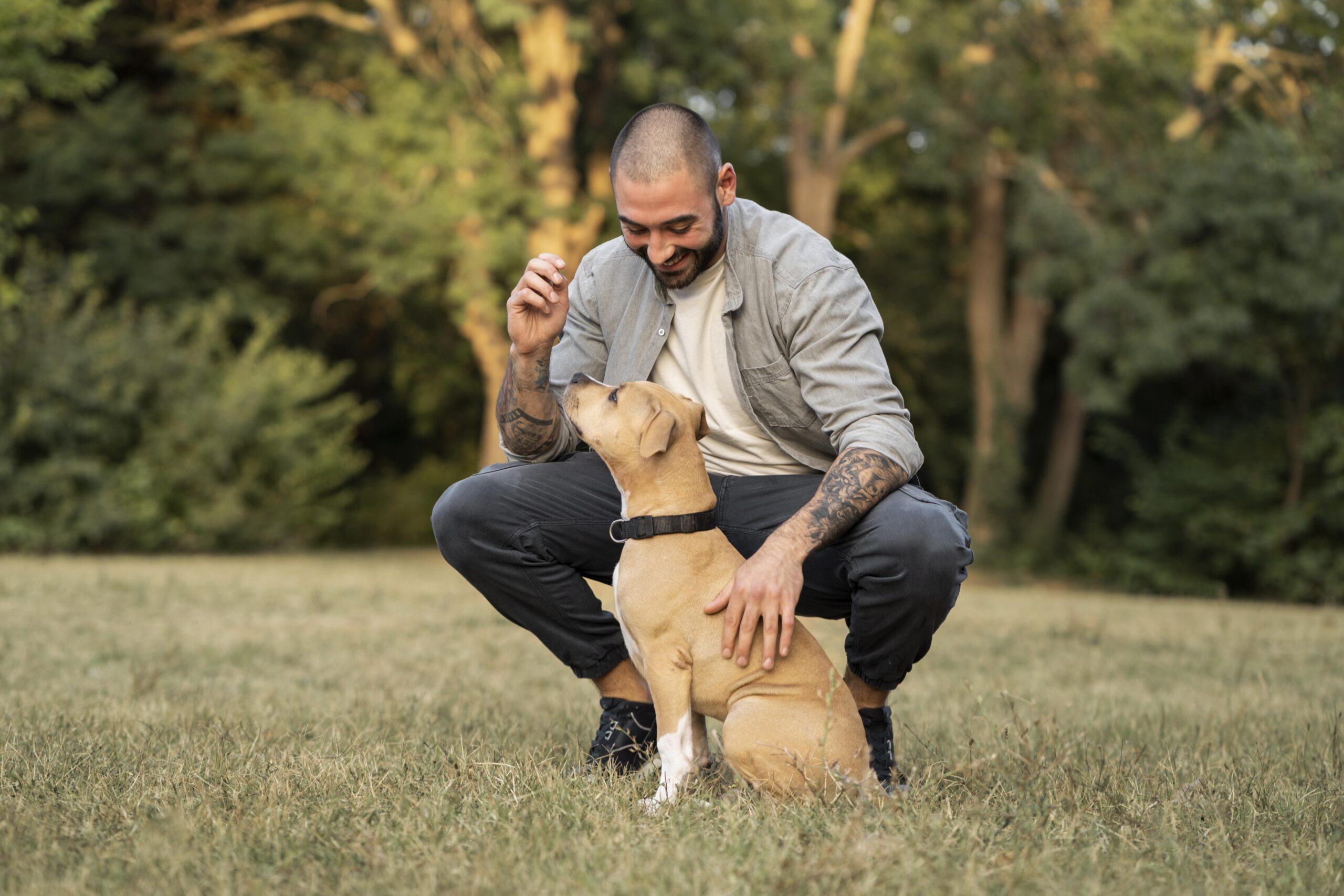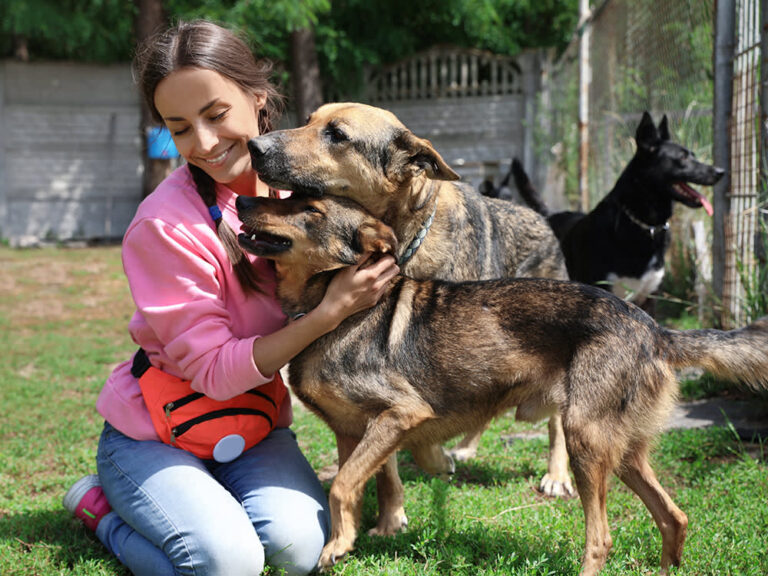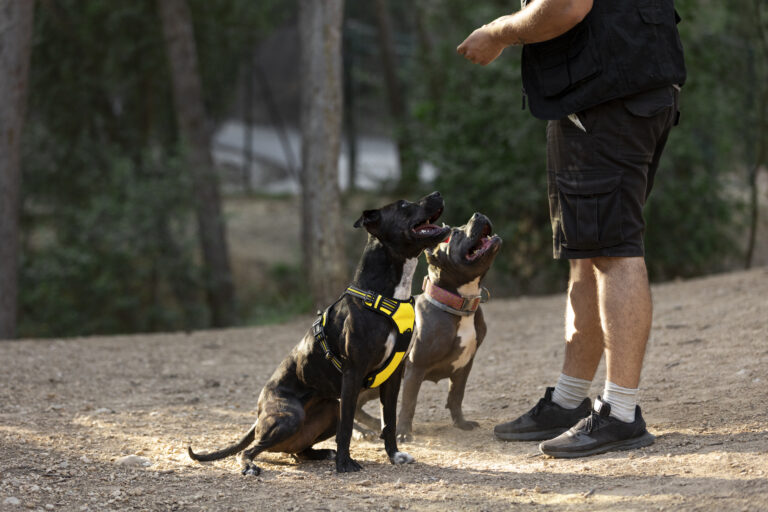Unlocking Communication: Teaching Your Dog The 5 Essential Commands
Ever wonder why some dogs seem almost human in their ability to understand us? This remarkable connection often boils down to mastering the essential commands that form the cornerstone of canine communication. Teaching your dog these commands not only strengthens the bond between you and your pet but also ensures their safety and well-being.
The concept of training dogs dates back thousands of years, with ancient records showing evidence of early dog domestication. Today, nearly 90% of expert dog trainers emphasize the importance of these foundational commands. Mastering commands like “sit,” “stay,” and “come” isn’t just about obedience; it’s a pathway to a harmonious and enriching relationship with your canine companion.
Unlocking Communication: Teaching Your Dog the 5 Essential Commands
Teaching your dog the five essential commands can greatly improve their behavior and your relationship. These commands include “sit,” “stay,” “down,” “come,” and “heel.” Mastering these basics makes daily life easier and safer for both you and your dog. Imagine a situation where your dog dashes towards a busy street. A quick “stay” could prevent a potential accident.
Consistency is key when training your dog. Each command needs to be practiced regularly in various environments. This ensures your dog understands the command no matter where they are. Using treats and positive reinforcement helps a lot. Dogs respond well to rewards and encouragement.
Make training sessions short and fun. Dogs have short attention spans, so keep each session around 15 minutes. Incorporate play and rewards to keep your dog engaged. For example, after a successful “come,” you can have a brief tug-of-war game. This makes learning enjoyable for both of you.
Effective communication through commands strengthens the bond between you and your dog. It builds trust and understanding, making both of you more confident. A well-trained dog is also more likely to behave in social situations. This opens up more opportunities for outings and adventures together. Ultimately, both you and your dog will enjoy a more harmonious life.
The Importance of Essential Commands in Dog Training
Essential commands lay the foundation for a well-trained dog. They help ensure your dog’s safety and improve their behavior. Commands like “sit” and “stay” are crucial in preventing dangerous situations. For instance, a dog that knows “stay” is less likely to run after a car or another animal. The basic commands make your dog more enjoyable to be around.
Training with essential commands also builds a stronger bond between you and your dog. Dogs love to please their owners and knowing what’s expected of them makes them happier. This mutual understanding fosters trust. Consistent training shows your dog that you’re reliable and caring. This bond can last a lifetime.
Businesses often use these commands to make dogs more adoptable. Shelters and rescues teach fundamental commands to increase a dog’s chances of finding a forever home. A dog that listens well is more attractive to potential adopters. This practice has led to higher adoption rates. It’s a win-win for the dogs and their new families.
Even therapy dogs rely heavily on these basic commands. Commands help them perform tasks that assist their handlers in everyday life. For example, a therapy dog trained to “stay” can offer comfort without overwhelming someone. These commands make service dogs more effective in their roles. In many ways, these essential commands are life-changing.
Defining the Five Essential Commands
The five essential commands every dog should learn are “sit,” “stay,” “come,” “down,” and “heel.” Each command serves a specific purpose, making daily interactions smoother. “Sit” is often the first command taught as it’s easy for dogs to understand. It helps in situations where your dog needs to be calm and focused. This command acts as a foundation for more advanced training.
“Stay” is another critical command, ensuring your dog remains in place until released. It is particularly useful in busy or potentially dangerous environments. For example, telling your dog to “stay” can prevent them from running into traffic. The “stay” command can be life-saving. It’s also handy when you need your dog to wait patiently.
The “come” command is vital for recalling your dog back to you. Whether at a dog park or in your backyard, this command ensures they return when called. It strengthens your control in off-leash scenarios. “Come” also builds your dog’s trust that returning to you is always rewarding. Frequent practice makes this command reliable.
The “down” command teaches your dog to lie down and stay calm. It’s beneficial for reducing hyperactivity or nervousness. Lastly, “heel” requires your dog to walk beside you without pulling on the leash. This command makes walks more enjoyable and safer. By mastering these five commands, your dog becomes well-behaved and responsive.
The Role of Consistency and Patience in Teaching Commands
Consistency is crucial when teaching your dog commands. Dogs thrive on routine and clear expectations. Using the same word, tone, and hand signal for each command helps your dog understand what you’re asking. If everyone in the household uses the same method, it speeds up the learning process. Inconsistency can confuse your dog and delay progress.
Patience is equally important in dog training. Dogs, like humans, make mistakes and learn at different paces. Some dogs may grasp commands quickly, while others need more time. Getting frustrated can hinder the training process. Always remain calm and positive, even if your dog doesn’t get it right away.
Building a consistent training schedule also helps. Regular practice sessions reinforce what your dog has learned. Even just 10-15 minutes a day can make a big difference. This consistency helps cement the commands in your dog’s mind. Over time, these regular sessions become second nature for both you and your dog.
Rewarding small successes encourages your dog to keep trying. Positive reinforcement, such as treats or praise, makes training enjoyable. Your dog will associate commands with positive outcomes. This strengthens their desire to listen to you. Knowing there’s a reward at the end keeps your dog motivated.
Consistency and patience also extend to correcting mistakes. If your dog doesn’t follow a command, calmly repeat the command and guide them to the correct action. Avoid harsh punishments as they can create fear and anxiety. Keeping a calm demeanor helps your dog feel secure. This positive environment makes learning easier and more effective.
Finally, remember to be patient with yourself, too. Training a dog is a learning experience for both of you. If you make a mistake, it’s okay to start over. Your dedication and consistency will pay off in the long run. Both you and your dog will benefit from the shared effort and stronger bond.
Tips and Techniques to Make Command Teaching Easier
Keep training sessions short and focused. Dogs have short attention spans, so it’s best to keep each session around 10-15 minutes. This ensures your dog remains interested and doesn’t get overwhelmed. You can have multiple short sessions throughout the day. Breaking up the routine keeps it engaging for your dog.
Use positive reinforcement to encourage good behavior. Reward your dog with treats, praise, or toys when they successfully follow a command. This forms a positive association with the command. Make sure to reward immediately after the correct action. Timing is crucial for your dog to understand what they did right.
- Start with simple commands and gradually move to more complex ones.
- Use a consistent tone and gesture for each command.
- Practice in different environments to reinforce the commands.
- Be patient and persistent; every dog learns at their own pace.
Incorporate games that reinforce commands. For example, play a game of fetch where your dog has to “sit” before you throw the ball. This makes learning fun and interactive. Games can also burn off excess energy, making your dog more focused during actual training sessions. It’s a win-win for both fun and learning.
Another useful technique is clicker training. Clicker training uses a small device that makes a clicking sound to mark the exact moment your dog performs the desired behavior. Follow the click with a treat to reinforce the action. Over time, your dog will understand which behaviors earn a reward. The clicker helps in capturing precise moments of good behavior.
Always set realistic expectations. Understand that each dog learns differently and at their own pace. Don’t expect your dog to learn everything overnight. Be consistent, patient, and positive throughout the training process. Celebrate small victories along the way, and you’ll see gradual improvement.
How Effective Command Teaching Enhances Dog-Owner Communication
Effective command teaching significantly improves communication between dogs and their owners. When a dog understands commands, it’s easier to convey expectations. This clarity reduces confusion and frustration for both parties. For example, a clear “sit” command can manage an excitable dog during greetings. It establishes a common language for interaction.
Being able to communicate effectively also boosts your dog’s confidence. Knowing what you expect helps them feel secure and reduces anxiety. This mutual understanding helps build a strong, trusting relationship. A confident dog is happier and behaves better in various situations. Consistent communication through commands fosters this confidence.
Basic commands also aid in managing your dog in public environments. Commands like “heel” and “come” are particularly useful during walks or outdoor activities. This control ensures your dog’s safety and makes outings more enjoyable. Social interactions become smoother as your dog knows how to behave. It creates a positive experience for everyone involved.
- Improved behavior reduces stress for both dog and owner.
- Consistent commands lead to easier training for advanced tricks.
- Commands help in emergency situations, ensuring your dog’s safety.
- Effective communication can make vet visits less stressful.
Understanding commands can also improve your dog’s emotional well-being. Dogs that know and follow commands tend to be more mentally stimulated. Mental stimulation is crucial for a dog’s overall health. Keeping your dog engaged through command training helps prevent boredom and destructive behavior. It’s an essential part of their daily routine.
Ultimately, effective command teaching enriches your relationship with your dog. The mutual respect and understanding you build will result in a more harmonious household. Your dog will appreciate the guidance and structure you provide. This makes for a more loving and cooperative companion. The benefits of good communication extend far beyond basic obedience.
Frequently Asked Questions
Discover helpful insights and tips about dog training commands to enhance communication with your furry friend. Here are some commonly asked questions and their detailed answers.
1. What age should I start training my dog with commands?
It’s best to start training a puppy as early as 8 weeks old. At this age, puppies are like sponges, absorbing new information quickly. Early training helps instill good habits and strengthens the bond between you and your pup. However, older dogs can also learn; it just might take a bit more time and patience.
With any dog, consistency is key. Regular practice sessions of 10-15 minutes each day work wonders. Make training fun to keep your dog’s interest piqued. Use positive reinforcement techniques such as treats, toys, or praise for successful completion of commands.
2. How long does it usually take for a dog to learn basic commands?
The time it takes for a dog to learn basic commands can vary widely based on several factors including age, breed, and personality. On average, it may take anywhere from a few days to several weeks for a dog to reliably follow simple commands like “sit” or “stay.” Puppies generally learn faster because they are highly adaptable.
Positive reinforcement accelerates the learning process significantly. Consistent practice in different environments also helps solidify the learned commands. It’s essential to be patient and never rush the training process; every dog learns at their own pace.
3. Can I use treats alone for training my dog?
Treats are excellent motivators but shouldn’t be the only tool in your arsenal. While treats can help capture your dog’s immediate interest, combining them with verbal praise and petting creates a more balanced approach. This combination ensures that your dog responds well even when treats aren’t available.
A varied reward system keeps dogs engaged longer during training sessions. Over-reliance on treats can sometimes lead to dependency where the dog obeys only if food is around. Gradually decreasing treat rewards while increasing other forms of praise helps achieve better balance.
4. Why is my dog stubborn when following commands?
Your dog’s stubbornness could stem from various issues such as lack of motivation, distractions, or even confusion regarding what you’re asking them to do. Sometimes dogs don’t understand the command clearly due to inconsistent teaching methods or mixed signals from different family members.
If your dog remains unresponsive despite efforts, consider evaluating external factors like the environment or checking for health-related issues affecting their behavior. Positive reinforcement tailored specifically for challenging situations often works wonders in overcoming these hurdles.
5. Is professional training necessary for my dog?
Professional training is not always essential but can be extremely beneficial, especially if you’re struggling with certain behavioral issues or advanced command teaching techniques require an expert touch. Trainers have specialized knowledge that expedites the learning process and addresses specific problems effectively.
You get personalized guidance tailored for both you and your pet which supplements regular home-based practices efficiently resulting in improved outcomes altogether making it worth consideration under particular circumstances enhancing overall investing yielding remarkable results over time correcting consistently maintaining steady progress throughout routine interventions instructor-assisted expert approaches blending naturally reinforcing permanent adoption desired conduct impactful manner aligning expectations successfully ensuring reliability dependable cooperation every instance high-caliber competency signature hallmark professional assistance engagement enriched experiences satisfying interaction sustained harmony fulfilling companionship sharing enduring joy understanding acceptance mutual respect cherished fidelity long-lasting harmonious bonding elevating moments pure happiness characterized lifetime achievements shared togetherness transcending beyond ordinary reaching extraordinary levels heartfelt connections lasting impressions unforgettable beautiful journey navigating life’s adventures confidently strong resilient partnership emerging triumphant challenges embracing joyous celebrations thriving collective ecological balance nurturing essence life coexistent principles diversity inclusivity adapting surviving flourishing commingled continuum profound ultimate expression affection care encompassing spirited alliance living beings conscious awareness integrated multidimensional realms…

Conclusion
Mastering the five essential commands—”sit,” “stay,” “come,” “down,” and “heel”—can revolutionize your relationship with your dog. These commands lay a solid foundation for effective communication and safety. Consistency and patience are key elements to successful training, making daily interactions smoother and more enjoyable.
Implementing various training techniques like positive reinforcement and short, engaging sessions helps in achieving desired behaviors. This not only boosts your dog’s confidence but also strengthens the bond you share. Ultimately, effective command training creates a well-behaved, happy companion that enriches your life.






